Ever written something that felt “okay” but not quite alive on the page?
That’s where Line editing comes in. It goes deeper than grammar checks; it shapes the voice, tone, and rhythm of your sentences so readers stay hooked from start to finish.
Many people wonder how line editing works compared to copy editing.
While copyediting polishes surface errors, line editing digs deeper into how your words actually sound and feel. It’s where good writing becomes great writing.
Curious about what is line editing vs copy editing?
Then continue reading to find out how to utilize line editing to make your manuscript soar.
Key Takeaways
- Line editing is concerned with the editing of the sentence flow, tone, and words used in the text to ensure effective readability.
- This is in contrast to copy editing, which focuses on grammatical correctness.
- Line editing smoothens writing, making it more interesting to the reader.
- Line editing fits the purpose of various writing, whether fiction, essay, business, or blog writing.
Definition of Line Editing
Now, what is line editing in writing?
Line editing is the art of perfecting the prose on a sentence and paragraph level to make it easier to read and more compelling.
This is the transition point between structural change on the broad and surface level interventions.
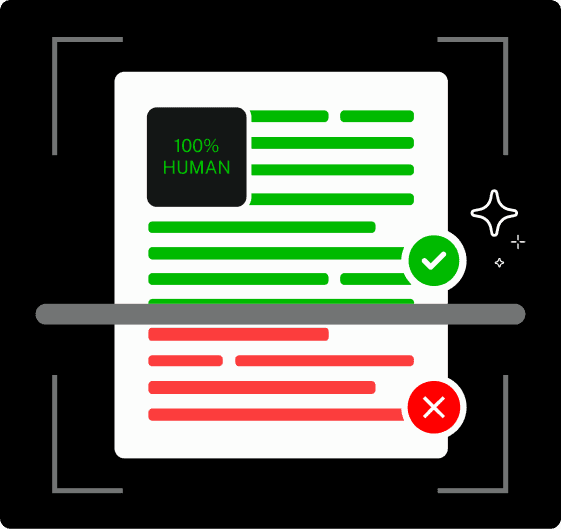
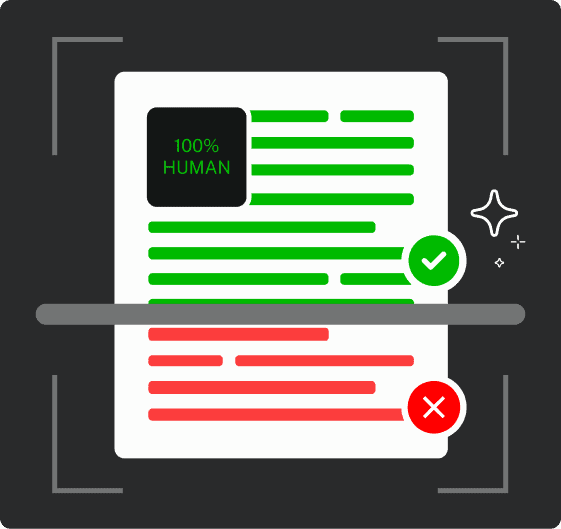
Never Worry About AI Detecting Your Texts Again. Undetectable AI Can Help You:
- Make your AI assisted writing appear human-like.
- Bypass all major AI detection tools with just one click.
- Use AI safely and confidently in school and work.
A line editor helps you with the building blocks of your writing, whether it is a sentence or the way the sentences relate to each other.
All this is to get your ideas across as clearly as possible.
It is done by analyzing the selection of words, the structure of the sentence, the rhythm, and the tone.
The point would be to maintain your voice but to render it readable.
How Line Editing Differs From Proofreading

Proofreading is also at the end of the editing scale and is the last quality control measure before publication.
Line editing is prose shaping and sculpting, while proofreading is merely finding what grammatical errors got by in the previous editorial stages.
Proofreaders go in search of surface errors to distract your readers.
They correct:
- spelling mistakes,
- fix punctuation errors,
- catch missing words, and
- ensure consistent formatting.
Line editing involves immersion into your content and style.
Proofreading, on the other hand, happens when the content is already fixed and is the final sense of scrutiny before your work gets out to readers.
How Line Editing Differs From Copy Editing
Copy editing and line editing are often conflated due to the fact that they both operate on the sentence level.
Yet they have diametrically opposite priorities when it comes to your text.
Copy editing is concerned with grammar, punctuation, style consistency in a style guide, and factual accuracy.
A copy editor functions as your manuscript’s quality control specialist.
They help to make sure that your writing is written in accordance with the general grammar principles, the style choice is consistent, and the information is clear.
Their major focus is to make your writing sound technically and professionally polished.
A copy editor will standardize information, like when you address a character in chapter one as Dr. Smith and in chapter three as Doctor Smith.
Line editors are more artistic in their approach to your prose and consider whether your words convey your ideas well.
Where a copy editor would take a grammatically correct, but unresponsive sentence, a line editor will question you about whether the sentence serves your greater objectives.
An example would be a copy editor correcting a run-on sentence; a line editor would similarly rearrange the sentence to make it more vivid and concise.
Where Line Editing Fits in the Editing Process
The editing process follows a logical sequence that moves from broad structural issues to fine-grained details.
Most professional editing begins with developmental editing, which addresses the big-picture elements of your work.
Developmental editors examine:
- plot structure in fiction,
- argument flow in nonfiction,
- character development,
- pacing, and
- overall organization.
They might suggest things like moving entire chapters, cutting unnecessary scenes, or developing underexplored themes.
This stage can involve substantial rewriting, so it makes little sense to perfect individual sentences before completing these major changes.
Line editing is a natural progression of developmental work, in that it presupposes that your content’s structure is sound.
When you are sure that your work is developed, you can concentrate on the effectiveness of every paragraph and sentence.
Line editing polishes the prose that will go into your final draft.
Line editing is followed by copy editing and finally proofreading.
The lines between these phases are at times blurred in practice, particularly when the editors are more experienced and may find and correct problems in several categories.
What Line Editing Focuses On
Line editing is between the developmental editing (big-structure) and copy editing (grammar and mechanics).
These are what line editing is concerned about:
Sentence Structure and Flow
This is concerned with the structure of individual sentences and their relationship with each other in order to make the prose readable.
Line editors examine:
- Clumsy sentences
- Different sentence structure and rhythm.
- Fluent flow of ideas.
- Incomprehensible or ambiguous structures.
Word Choice and Precision
The concern here is the ability to use the most effective words to express meaning clearly and powerfully.
This includes:
- Substituting ambiguous or redundant words with the more precise ones.
- Using less jargon or language that is too complex.
- Making the tones consistent throughout the work.
- Putting up weak verbs and eliminating filler words.
Clarity and Readability
This includes simplifying the writing process and ensuring that it is simplified to the maximum extent without depth or detail getting lost.
It entails:
- Rewriting sentences in logical order.
- Division of dense paragraphs that are difficult to read.
- Making every sentence have a purpose.
- Simplifying confusing concepts for the audience.
Style and Voice
This involves the personality and character of the writing, in which it is supposed to be authentic and suited to its context, and yet still interesting to the target audience.
It requires:
- Maintaining hold of voice and tone.
- Improvement of the natural writing style of the author.
- Making sure that the writing is suitable for its audience.
- Freining dialogue and narrative.
When you are not sure if your sentences are clear or wordy, you can use our Rewording Tool to simplify or paraphrase at the sentence level before performing a complete edit.
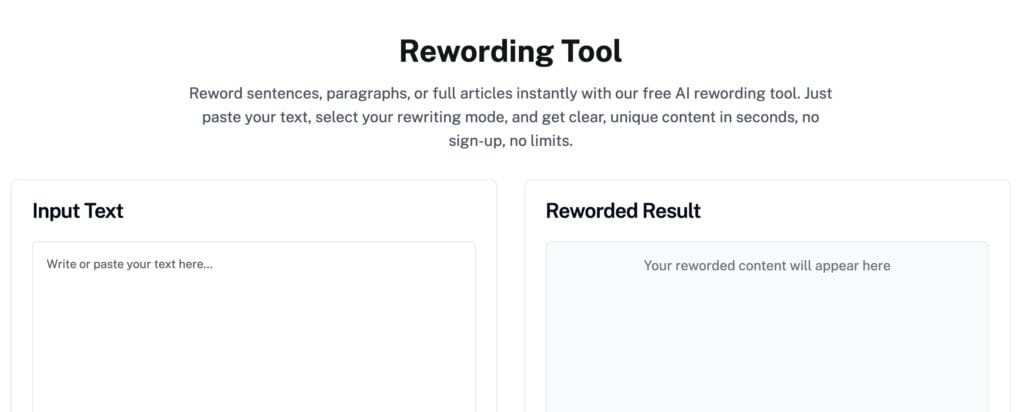
Examples of Line Editing in Action
We’ll examine several examples of how line editing happens in any given work.
Sentence Structure and Flow
Before: The company’s new policy, which was implemented last month and affects all employees who work in the marketing department, requires that they submit their weekly reports by Friday at 5 PM, and failure to do so will result in disciplinary action.
After: The company implemented a new policy last month for marketing employees. All weekly reports must be submitted by Friday at 5 PM. Failure to comply will result in disciplinary action.
Style and Voice
Before: One might consider that it could be beneficial to perhaps implement some sort of system whereby employees are able to provide feedback.
After: We should create an employee feedback system.
Flow Between Sentences
Before: The project was completed on time. The budget was exceeded. The client was satisfied with the results.
After: Although the project was completed on time and satisfied the client, we exceeded the budget.
Paragraph-Level Editing
Before: Social media has changed how we communicate. People spend hours scrolling through feeds. Privacy concerns are growing.
Companies collect user data. Mental health effects are being studied. Regulation may be necessary.
After: Social media has fundamentally changed how we communicate, with people spending hours scrolling through feeds daily.
However, this shift raises serious concerns about privacy and mental health. As companies collect vast amounts of user data and researchers document psychological effects, calls for regulation are growing louder.
Line editing reconfigures the writing on a number of levels, retaining the same ideas but making them more striking.
When you need to craft whole paragraphs to read better and sound more powerful, our Paragraph Rewriter could be a handy tool before or in conjunction with a professional line edit.

Why Line Editing Is Important
Line editing does so much in polishing an article or a text.
Here’s why it’s so important.
- Line editing enhances the understanding of complex concepts by the reader, so they do not get lost or confused by wordy phrases.
- Adds a sense of professionalism, which increases the likelihood of the readers believing in the message portrayed by the author.
- Doubles the interest of the reader and does not force the reader to leave a text because it is not readable.
- Gets rid of uncertainty in favor of specific word selection..
- Ensures maximum word efficiency through few words and omitting filler words; every word counts.
- Bridges the gap between ideas that connect with the intended readership effectively.
- Elevates overall writing quality by refining every element that affects how readers experience the text.
And for those working with AI-generated drafts, our AI Humanizer is especially useful. It helps refine language so the text feels smooth, natural, and genuinely human before a deeper line edit.
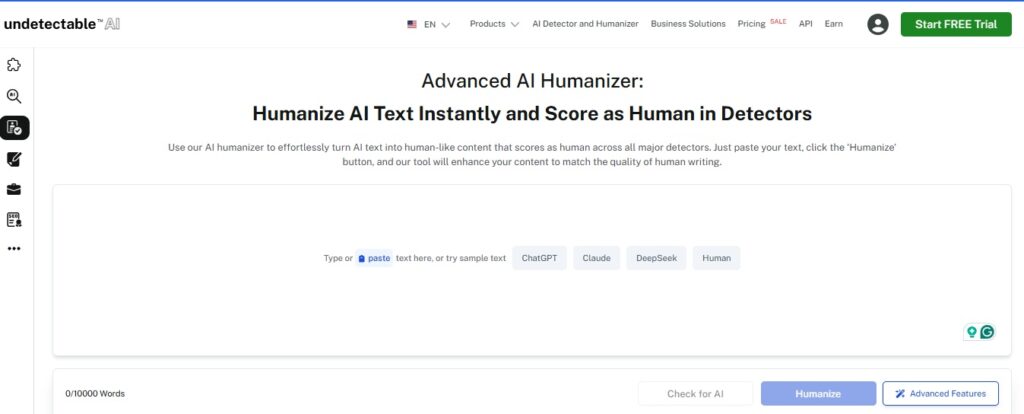
Line Editing vs Other Editing Stages
Line editing sits at an intersection where it can’t be ignored in the editing stages. Comparatively, this is the distinction they all have.
| Editing Stage | Primary Focus | Level of Detail | Main Questions Asked | Example Changes |
| Developmental Editing | Big-picture structure, content, and organization | Macro-level (entire document) | Does this make sense? Is the argument logical? What’s missing? | Reordering chapters, adding/removing sections, restructuring arguments |
| Line Editing | Sentence-level clarity, flow, and style | Mid-level (sentences and paragraphs) | Is this clear? Does it flow well? Is the tone consistent? | Rewriting awkward sentences, improving word choice, and varying sentence length |
| Copy Editing | Grammar, punctuation, and consistency | Micro-level (individual words and mechanics) | Is this grammatically correct? Are facts accurate? Is formatting consistent? | Fixing comma splices, correcting spelling, and standardizing capitalization |
| Proofreading | Final errors and formatting | Surface-level (typos and layout) | Are there any remaining mistakes? Does it look professional? | Catching missed typos, adjusting spacing, fixing page numbers |
When Each Stage Occurs
This is when and how each stage occurs, and the purpose it serves.
| Stage | Timing | Purpose |
| Developmental Editing | First (after initial draft) | Shape the content and structure |
| Line Editing | Second | Polish the writing style and clarity |
| Copy Editing | Third | Ensure accuracy and consistency |
| Proofreading | Final | Catch last-minute errors before publication |
Line Editing for Different Types of Writing

There is no universal line editing process. The emphasis varies with the writing you are working on.
Academic Writing
Academic writing line editing places much emphasis on writing accurately and clearly without using an overly scholarly tone.
The nature of academic writing is characterized by unnecessarily complex sentence structures, which serve the purpose of complicating the meaning rather than improving it.
So, this line editing is aimed at producing prose that reflects knowledge in clear thinking and not wordy but bombastic prose.
Business Communication
Business writing requires efficiency and brevity.
Therefore, line editing is essential in getting rid of corporate jargon and superfluous formality that may blur clarity and concise communication.
Line editors, in this instance, work on converting passive voice constructions to active voice.
It should be professional but friendly, but does not rely on either overly casual wording or unnecessarily formal business language.
Each sentence should support its presence by either giving the required facts or the need to move the business goal.
Creative Writing
Creative writing poses special difficulties in line editing since style and voice are important here than in other forms of writing.
The line editors have to maintain the unique voice of the author and enhance readability and influence.
They also do much with rhythm and pacing, as the musicality of prose is as significant as its message.
The aim is to establish a smooth reading experience that would enable the reader to immerse in the story without tripping on clumsy constructions and a disjointed tone.
Web Content and Blogging
Online writing has to deal with readers’ shorter attention spans.
As a result, line editing in this area is designed to meet the demands of online reading.
Line editors are concerned with developing scannable content for easy readability for online readers.
Such content has mixed paragraph lengths so that the important points are noticeable even to those who do not read properly but skim through.
Sentences are usually shorter and to the point as compared to printed media. Also, intricate concepts are divided into manageable portions.
Further making the process easier, you can first extend raw outlines into drafts with our AI Paragraph Generator and then polish them with line edits.
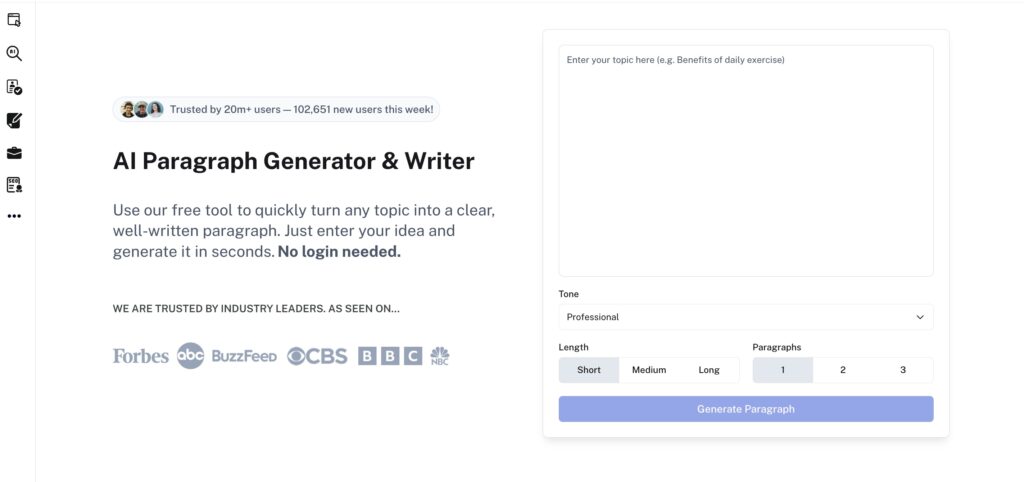
In the case of academic work, we have our AI Essay Rewriter that polishes the whole essay, gives it better flow and readability without losing meaning.
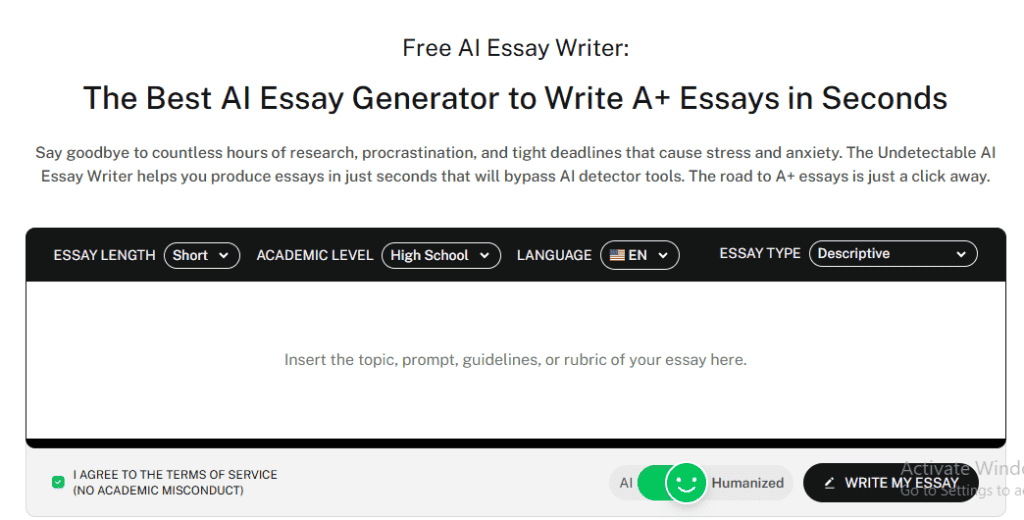
You can also use our Undetectable AI’s AI Checker to evaluate the originality of your edited or rewritten text.
It helps confirm whether your refinements sound authentically human and ensures that your final draft maintains a natural, original tone.
Want to see our AI Detector and Humanizer in action? Check them out in the widget below!
Conclusion
What is line editing? Line editing makes your words come alive. It refines tone, style, and clarity to engage your readers, while complementing copy editing and proofreading. When it is skipped, the writing has a lifeless quality, even though it may be technically accurate.
Before you finalize your draft, try Undetectable AI’s Rewording Tool for smoother phrasing, the AI Paragraph Generator for better structure, and the AI Essay Rewriter for polished rewrites.
Investing time in line editing or using our tools to refine your work is a way of making your work shine.
Undetectable AI helps your writing stand out—clearer, sharper, and more engaging every time.
